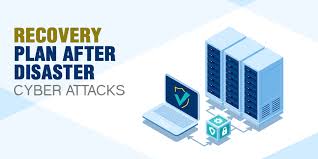Cyber Attack Disaster Recovery Plan, In today’s digital landscape, organizations face increasing threats from cyber attacks. From data breaches to ransomware, the consequences of such incidents can be catastrophic. A well-structured cyber attack disaster recovery plan (CADRP) is crucial for minimizing damage and ensuring business continuity. Here’s how to create an effective plan that protects your organization.
Understanding the Importance of a Cyber Attack Disaster Recovery Plan
A cyber attack disaster recovery plan serves as a blueprint for responding to and recovering from cyber incidents. The significance of having a CADRP lies in its ability to:
- Minimize Downtime: A robust recovery plan helps organizations swiftly resume operations, reducing the duration of business interruptions.
- Protect Data Integrity: Effective plans ensure that critical data is backed up and can be restored to prevent loss during an attack.
- Enhance Preparedness: A well-defined strategy equips teams with the knowledge and resources needed to respond efficiently to cyber threats.
- Maintain Regulatory Compliance: Many industries are subject to regulations that require organizations to have a disaster recovery plan in place.
Key Components of a Cyber Attack Disaster Recovery Plan
To develop an effective CADRP, consider the following components:
- Risk Assessment and Analysis
- Identify potential cyber threats that your organization may face.
- Evaluate the vulnerabilities in your systems and processes.
- Prioritize risks based on their potential impact and likelihood of occurrence.
- Business Impact Analysis (BIA)
- Determine the critical functions and processes of your organization.
- Assess the potential impact of disruptions on these functions, including financial, operational, and reputational damages.
- Establish Recovery Time Objectives (RTO) and Recovery Point Objectives (RPO) for each function.
- Developing Recovery Strategies
- Create strategies tailored to different types of cyber incidents (e.g., data breaches, ransomware attacks).
- Define procedures for restoring data, applications, and systems, including backup solutions and cloud-based recovery options.
- Establish communication protocols for internal teams and external stakeholders.
- Roles and Responsibilities
- Clearly outline roles for team members involved in the recovery process.
- Designate a disaster recovery coordinator to oversee the execution of the plan.
- Ensure that all team members understand their responsibilities during a cyber incident.
- Testing and Training
- Regularly test your CADRP through simulations and tabletop exercises to identify gaps and areas for improvement.
- Conduct training sessions to ensure all employees understand the plan and their roles in it.
- Update the plan as necessary based on feedback from testing and changing organizational needs.
- Continuous Improvement
- Review and update the disaster recovery plan regularly, considering changes in technology, business operations, and emerging cyber threats.
- Encourage feedback from all stakeholders to refine the plan continually.
Conclusion
In an era where cyber threats are ever-evolving, a comprehensive cyber attack disaster recovery plan is essential for safeguarding your organization. By conducting thorough risk assessments, implementing recovery strategies, and fostering a culture of preparedness, businesses can effectively mitigate the impact of cyber attacks and ensure a swift recovery. Remember, the goal of a CADRP is not just to survive an attack, but to thrive in the aftermath.
You Might Also Like These:
Forex MLM Fraud: A Growing Concern in the World of Online Trading
Is Forex Fraud? A Deep Dive into Forex Trading and Scams
Understanding Forex Fraud Login and How to Protect Yourself

